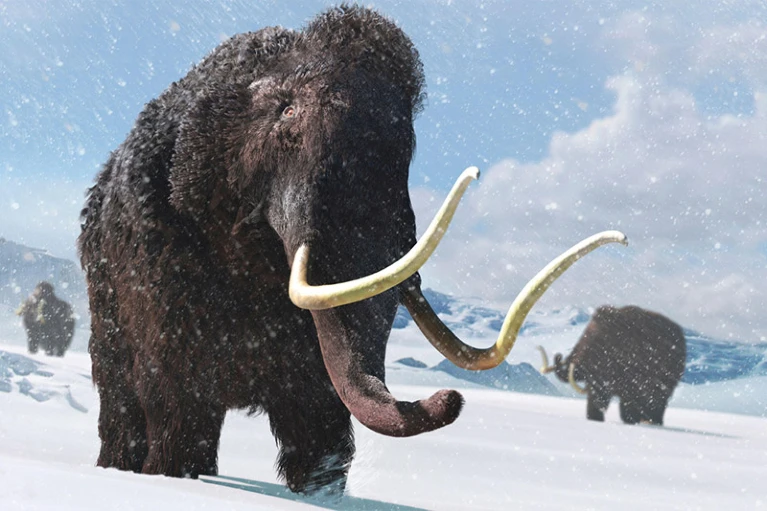Nanoplastics linked to heart attack, stroke and early death, study finds
研究發現奈米塑膠與心臟病、中風和過早死亡有關
Health
People with microplastics or nanoplastics in their carotid artery tissues were twice as likely to have a heart attack, stroke or die from any cause over the next three years than people who had none, a new study found. Carotid arteries, which lie on each side of the neck and carry blood to the brain, can become clogged with fatty cholesterol plaques in a similar fashion as the arteries leading into the heart, a process known as atherosclerosis. “To date, our study is the first that associated the plastic contamination with human diseases,” said Raffaele Marfella, lead author of the study published Wednesday in the New England Journal of Medicine. “Our data must be confirmed by other studies and on larger populations,” said Marfella, professor of internal medicine and director of the department of medical and surgical sciences at the University of Campania Luigi Vanvitelli in Naples, Italy, in an email. “However, our study convincingly highlights the presence of plastics and their association with cardiovascular events in a representative population affected by atherosclerosis.”
--from CNN
一項新的研究發現,頸動脈組織中含有微塑膠或奈米塑膠的人在未來三年內患有心臟病、中風或死於任何原因的可能性是沒有塑膠料的人的兩倍。 頸動脈位於頸部兩側,負責將血液輸送到大腦,其功能與供應心臟的冠狀動脈類似,但它可能會被脂肪膽固醇斑塊堵塞,這個過程稱為動脈粥狀硬化。 「到目前為止,我們的研究是第一個將塑膠污染與人類疾病連接起來的研究,」週三在《新英格蘭醫學雜誌》上發表的這項研究的主要作者Raffaele Marfella說。 Marfella也是義大利那不勒斯坎帕尼亞大學內科教授兼醫學和外科科學系主任,「我們的數據必須得到其他研究和更多人數的證實,」他在一封電子郵件中說,「然而,我們的研究令人信服地強調了塑料的存在以及它們與受動脈粥樣硬化影響的代表性人群中心血管事件的關聯。」
--摘錄翻譯自CNN
A daily step goal may cut disease and death risk in even otherwise sedentary people, study finds
研究發現,即使是久坐的人,每日步數達標也可以降低疾病和死亡風險
Health
Ten thousand steps per day have long been known as the magic number needed to lower risk of disease and early death. What researchers didn’t know was whether the amount could have the same effect even for people who are sedentary most of the day. That’s until now, due to research that has found among this group, getting 9,000 to 10,000 steps per day lowered the risk of developing cardiovascular disease by 21% and the odds of dying early by 39%, according to the study published Tuesday in the British Journal of Sports Medicine. The findings are “by no means a get out of jail card for people who are sedentary for excessive periods of time,” said the study’s lead author, Dr. Matthew Ahmadi, in a news release. “However, it does hold an important public health message that all movement matters, and that people can and should try to offset the health consequences of unavoidable sedentary time by upping their daily step count,” added Ahmadi, a postdoctoral research fellow at the University of Sydney’s Charles Perkins Centre in Australia.
--from CNN
常期以來,每天一萬步一直被認為是降低疾病和過早死亡風險所需的神奇數字。研究人員不知道的是,對於一天中大部分時間久坐的人來說,這個運動量是否也能產生相同的效果。 直到現在,根據週二發表在《英國運動醫學雜誌》上的研究,針對該族群的研究發現,每天步行 9,000 至 10,000 步可將心血管疾病的風險降低21%,早死的機率降低39%。 該研究的主要作者Matthew Ahmadi博士在新聞稿中表示,這項發現「絕不是久坐不動的人的出獄卡」。 澳洲雪梨查爾斯帕金斯中心的博士後研究員 Ahmadi 補充說「然而,它確實傳達了一個重要的公共衛生訊息,也就是所有的運動都很重要,人們可以而且應該嘗試,透過增加每日步數來抵消不可避免的久坐時間對健康的影響,」
--摘錄翻譯自CNN
Big changes for Apple, Google and other tech giants: Europe’s sweeping law goes into effect today
蘋果(Apple)、谷歌(Google)和其他科技巨頭的重大變化:歐洲全面法律今天生效
Culture
The new EU regulations force sweeping changes on some of the world’s most widely used tech products, including Apple’s app store, Google search and messaging platforms, including Meta’s WhatsApp. And they mark a turning point in a global effort by regulators to bring tech giants to heel after years of allegations that the companies harmed competition and left consumers worse off. In one seismic shift to comply with the law, Apple said it plans to let EU users download iPhone apps via third-party app stores — easing its grip on iOS for the first time since the App Store’s debut 15 years ago. In another significant change, Google said it will alter search results to drive more traffic to independent comparison-shopping or travel-booking sites, instead of directing users toward Google Flights or other tools it owns. Google will also allow Android users to select a preferred browser and search engine from a menu of options when first setting up their devices, rather than defaulting users to Google’s Chrome browser and search engine. That could give a leg up to rival browsers such as Opera or Mozilla’s Firefox and competing search engines including DuckDuckGo or Microsoft’s Bing.
--from CNN
歐盟的新規定迫使世界上一些使用最廣泛的科技產品產生全面性的變化,包括蘋果(Apple)的應用商店、谷歌(Google)搜尋和訊息平台、以及Meta的WhatsApp。它們顯示監管機構在全球範圍內讓科技巨頭就範的努力出現了一個轉折點,多年來,這些公司一直被指控損害競爭並損害消費者利益。 蘋果公司為遵守法律做出了重大改變。該公司表示,計劃允許歐盟用戶透過第三方應用程式商店下載iPhone應用程式,這是自App Store在15年前亮相以來,首次放鬆對iOS的控制。 谷歌表示,另一個重大變化是,它將改變搜尋結果,以將更多流量導向獨立的比價購物或旅遊預訂網站,而不是導向Google航班或其擁有的其他工具。谷歌還將允許Android用戶在首次設定設備時,從選項清單中選擇瀏覽器和搜尋引擎,而不是預設用戶使用Google的Chrome瀏覽器和搜尋引擎。這可能會為Opera或Mozilla的Firefox等競爭對手的瀏覽器以及DuckDuckGo或微軟的Bing等搜尋引擎帶來優勢。
--摘錄翻譯自CNN
A tech company is growing diamonds in the desert
一家科技公司正在沙漠中種植鑽石
Culture
For thousands of years, humans have dug deep into the Earth in search of diamonds, creating some of the world’s largest manmade pits in Russia and South Africa that descend as much as 625 meters (2,050 feet) below the ground. But mining isn’t the only way to source diamonds. The first lab-grown diamond (LGD) was produced in the 1950s, according to the International Gem Society, and the technology has continued to develop, enabling labs to grow gem-quality crystals at affordable prices — up to 80% cheaper — without the sustainability and ethical concerns of mining. The United Arab Emirates (UAE) is a global leader in diamond imports and exports, but it does not have any diamond mines. So entrepreneur Mohamed Sabeg saw an opportunity to not just trade diamonds, but grow them. In 2022, he co-founded Dubai-based 2DOT4 Diamonds, becoming the first to produce, cut, and polish lab-grown diamonds in the UAE. “Our idea was to bring the mine to the consumer,” says Sabeg. “Instead of having diamonds flying all around the world, the diamond is produced and sold locally.”
--from CNN
數千年來,人類一直在地球深處挖掘鑽石,在俄羅斯和南非創造了一些世界上最大的人造礦坑,這些礦坑深達地下625公尺(2,050英尺)。 但採礦並不是獲得鑽石的唯一途徑。根據國際寶石協會的說法,第一顆實驗室培育鑽石 (LGD)是在1950年代生產出來的,該項技術不斷發展,使實驗室能夠以實惠的價格培育具有寶石質的晶體(價格便宜了 80%),而不需要考慮採礦的可持續性問題和道德問題。 阿拉伯聯合大公國(UAE)是全球鑽石進出口的領導者,但它沒有任何鑽石礦山。因此,企業家Mohamed Sabeg不僅看到了交易鑽石的機會,也看到了種植鑽石的機會。 2022年,他和別人共同創立了位於杜拜的 2DOT4 Diamonds公司,成為阿聯酋第一家生產、切割和拋光實驗室以培育鑽石的公司。 「我們的想法是將鑽石礦帶給消費者,」Sabeg說。「不是將鑽石飛送到世界各地,而是在當地生產和銷售。」
--摘錄翻譯自CNN
Will these reprogrammed elephant cells ever make a mammoth?
這些重新編碼的大象細胞會變成長毛象嗎?
Sciences
The breakthrough — announced today by the de-extinction company Colossal Biosciences in Dallas, Texas — is an early technical success in Colossal’s high-profile effort to engineer elephants with woolly mammoth traits.Eighteen years ago, researchers showed that mouse skin cells could be reprogrammed to act like embryonic cells. These induced pluripotent stem (iPS) cells can differentiate into any of an animal’s cell types. They are key to Colossal’s plans to create herds of Asian elephants (Elephus maximus) — the closest living relative of extinct woolly mammoths (Mammuthus primigenius) — that have been genetically edited to have shaggy hair, extra fat and other mammoth traits.“I think we’re certainly in the running for the world-record hardest iPS-cell establishment,” says Colossal co-founder George Church, a geneticist at Harvard Medical School in Boston, Massachusetts, and a co-author of a preprint describing the work, which will soon appear on the server bioRxiv.
--from Nature
位於德州達拉斯的反物種滅絕公司Colossal Biosciences今天宣布了這一突破,這是該公司在在設計具有長毛象特徵大象方面的努力,所取得的早期技術成功。 十八年前,研究人員發現,老鼠的皮膚細胞可以被重新編碼,使其表現得像胚胎細胞。這些誘導多能幹細胞(iPS)可以分化成任何動物細胞類型。它們是Colossal公司培育亞洲象群計畫的關鍵。亞洲象是已絕種的長毛猛獁象(Mammuthus primigenius) 的近親,它們經過基因編碼,具有蓬鬆的毛髮、較多的脂肪和其他猛獁象的特徵。 Colossal的聯合創辦人、馬薩諸塞州波士頓哈佛醫學院的遺傳學家、也是描述這項工作的預印本的合著者George Church表示:「我認為我們肯定正在競爭世界紀錄中最困難的iPS細胞建立。」該預印本很快就會出現在bioRxiv伺服器上。
--摘錄翻譯自Nature
Millions of research papers at risk of disappearing from the Internet
數以百萬計的研究論文面臨從網路上消失的風險
Sciences
More than one-quarter of scholarly articles are not being properly archived and preserved, a study of more than seven million digital publications suggests. The findings, published in the Journal of Librarianship and Scholarly Communication on 24 January, indicate that systems to preserve papers online have failed to keep pace with the growth of research output.Nevertheless, preservation specialists have welcomed the analysis. “It’s been hard to know the real extent of the digital preservation challenge faced by e-journals,” says William Kilbride, managing director of the Digital Preservation Coalition, headquartered in York, UK. The coalition publishes a handbook detailing good preservation practice. “Our entire epistemology of science and research relies on the chain of footnotes,” explains author Martin Eve, a researcher in literature, technology and publishing at Birkbeck, University of London. “If you can’t verify what someone else has said at some other point, you’re just trusting to blind faith for artefacts that you can no longer read yourself.” “Everybody thinks of the immediate gains they might get from having a paper out somewhere, but we really should be thinking about the long-term sustainability of the research ecosystem,” Eve says. “After you’ve been dead for 100 years, are people going to be able to get access to the things you’ve worked on?”
--from Nature
一項針對700多萬份數位出版物的研究顯示,超過四分之一的學術文章沒有被適當的歸檔和保存。1 月 24 日發表在《圖書館學與學術交流雜誌》上的研究結果顯示,線上保存論文的系統未能跟上研究成果的增長的速度。 儘管如此,文物保護專家還是對此分析表示歡迎。位於英國約克的數位保存聯盟總經理William Kilbride說「很難知道電子期刊面臨的數位保存挑戰的真實程度」。該聯盟出版了一本手冊,詳細介紹了良好的保存措施。 「我們整個科學和研究的知識論都依賴於一連串的腳註,」作者Martin Eve解釋說,他是倫敦大學Birkbeck分校文學、技術和出版的研究人員。「如果你不能證實別人在其他時候說過的話,那你就是盲目相信那些你自己都看不懂的東西。」 「每個人都會認為,他們會在某處發表論文中,可能獲得的直接收益,但我們真的應該考慮研究生態系統的長期可持續性,」Eve說。「在你去世100年後,人們還能接觸到你做過的研究嗎?」
--摘錄翻譯自Nature
